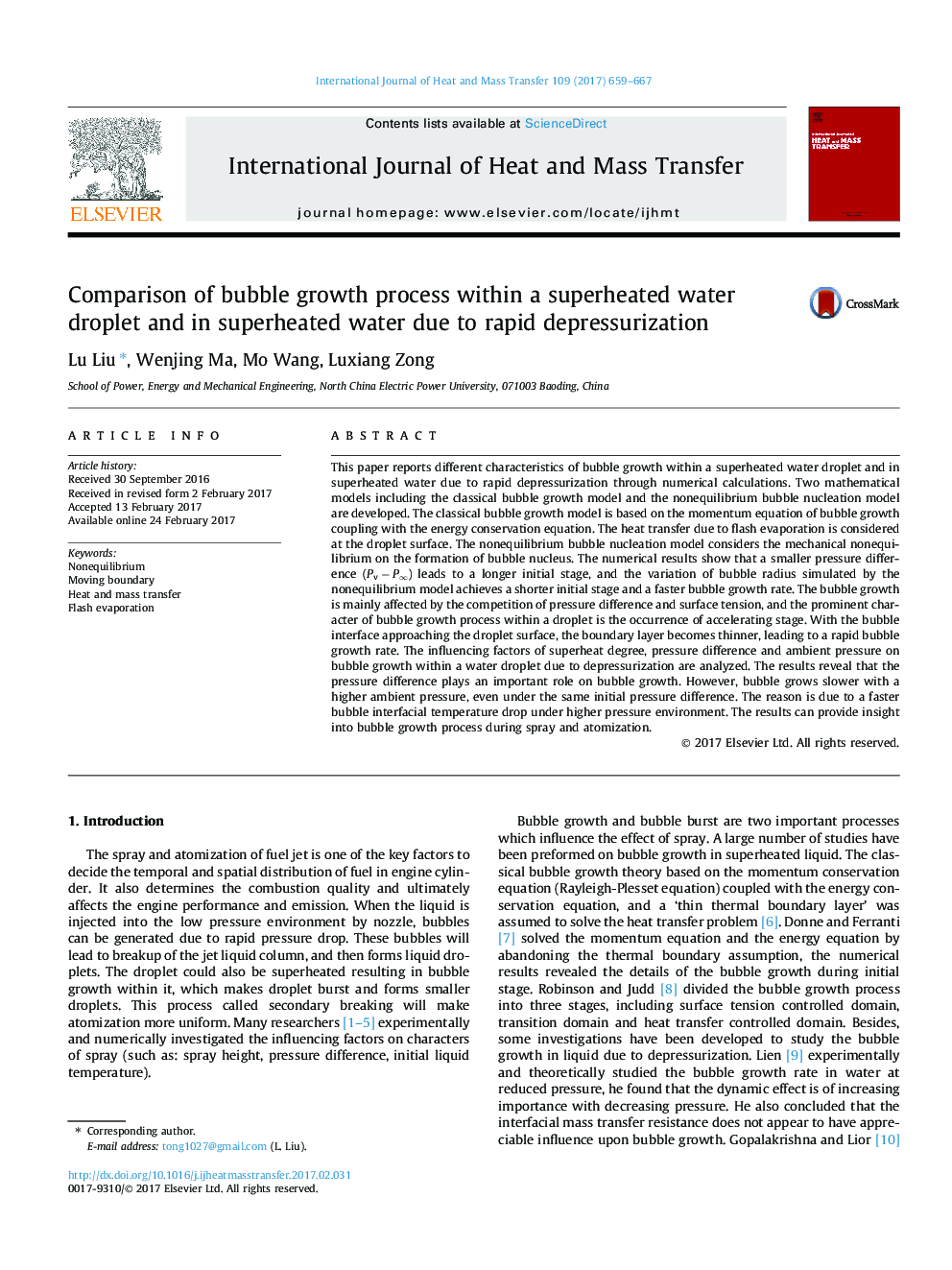| کد مقاله | کد نشریه | سال انتشار | مقاله انگلیسی | نسخه تمام متن |
|---|---|---|---|---|
| 4994517 | 1458032 | 2017 | 9 صفحه PDF | دانلود رایگان |
عنوان انگلیسی مقاله ISI
Comparison of bubble growth process within a superheated water droplet and in superheated water due to rapid depressurization
ترجمه فارسی عنوان
مقایسه روند فرایند حباب در یک قطره آب فوق العاده شونده و در آب های فوق گرم به علت کم فشار سازی سریع
دانلود مقاله + سفارش ترجمه
دانلود مقاله ISI انگلیسی
رایگان برای ایرانیان
کلمات کلیدی
عدم همبستگی، مرز متحرک انتقال حرارت و جرم، تبخیر فلش،
موضوعات مرتبط
مهندسی و علوم پایه
مهندسی شیمی
جریان سیال و فرایندهای انتقال
چکیده انگلیسی
This paper reports different characteristics of bubble growth within a superheated water droplet and in superheated water due to rapid depressurization through numerical calculations. Two mathematical models including the classical bubble growth model and the nonequilibrium bubble nucleation model are developed. The classical bubble growth model is based on the momentum equation of bubble growth coupling with the energy conservation equation. The heat transfer due to flash evaporation is considered at the droplet surface. The nonequilibrium bubble nucleation model considers the mechanical nonequilibrium on the formation of bubble nucleus. The numerical results show that a smaller pressure difference (Pv â Pâ) leads to a longer initial stage, and the variation of bubble radius simulated by the nonequilibrium model achieves a shorter initial stage and a faster bubble growth rate. The bubble growth is mainly affected by the competition of pressure difference and surface tension, and the prominent character of bubble growth process within a droplet is the occurrence of accelerating stage. With the bubble interface approaching the droplet surface, the boundary layer becomes thinner, leading to a rapid bubble growth rate. The influencing factors of superheat degree, pressure difference and ambient pressure on bubble growth within a water droplet due to depressurization are analyzed. The results reveal that the pressure difference plays an important role on bubble growth. However, bubble grows slower with a higher ambient pressure, even under the same initial pressure difference. The reason is due to a faster bubble interfacial temperature drop under higher pressure environment. The results can provide insight into bubble growth process during spray and atomization.
ناشر
Database: Elsevier - ScienceDirect (ساینس دایرکت)
Journal: International Journal of Heat and Mass Transfer - Volume 109, June 2017, Pages 659-667
Journal: International Journal of Heat and Mass Transfer - Volume 109, June 2017, Pages 659-667
نویسندگان
Lu Liu, Wenjing Ma, Mo Wang, Luxiang Zong,
